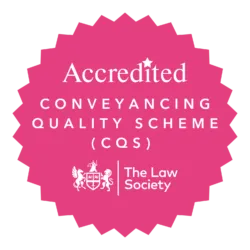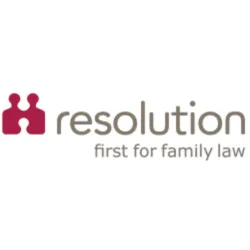
Banter or Harassment?
What is the difference between banter and harassment discrimination?
Section 26 of the Equality Act 2010 states that a person (A), harasses another (B) if A engages in unwanted conduct related to a relevant protected characteristic (e.g. sex or race), and the conduct has the purpose or effect of violating B’s dignity or creating an intimidating, hostile, degrading, humiliating or offensive environment for B. In deciding whether the conduct has this effect, you must take account the perception of B, the other circumstances of the case, and whether it is reasonable for the conduct to have that effect.
What can employers do about harassment discrimination?
There have been multiple harassment cases heard in courts and depending on what is accused, the average Employment Tribunal award for race discrimination is around £102’259. If the employer takes steps to stop the harassment, then they are likely to avoid punishment. Implementing strategies to prevent and stop harassment, like learning sessions or posters around the office with official harassment guidance can help the employer avoid any risks.
It is important to have a communicative and energetic workforce for an employer as it helps maintain morale but there is a point where workplace banter becomes harassment. If a protected characteristic is mentioned in the exchange, then it is likely to be a harassing comment.
What are the 9 protected characteristics in the workplace?
- Age
- Sex
- Gender reassignment
- Marriage or civil partnership
- Pregnancy and maternity
- Race
- Religion or belief
- Disability
- Sexual orientation
3 types of harassment under the discrimination law
- Unwanted conduct relating to a protected characteristic
- Unwanted conduct in a sexual manner
- Treated worse due to rejection or submitting to unwanted behaviour of sexual nature. OR behaviour relating to gender reassignment or sex
How do I make a harassment at work claim?
If you think that you have been harassed at work, contact us, and provide as much proof and information as possible to help improve your claim. To make an harassment at work claim please contact our Employment Law department on 033 3344 9600.
Firstly, we will assess whether or not you have raised these concerns to your employer and if a formal grievance is necessary.
It is important that a grievance is raised as this demonstrates your compliance with the Acas Code of Practice on Disciplinary and Grievance procedures, without which any compensation you may be awarded in relation to your claim could be reduced by up to 25%.
In order to pursue the claim further in the Tribunal an any claim must be issued to the Tribunal within 3 months less a day of any harassment suffered. This may be difficult to pinpoint therefore if you are uncertain about this please contact our employment team as soon as possible so that we may assist you.
The first step of issuing a claim is to engage in Acas Early Conciliation. Acas Early Conciliation gives the opportunity to resolve the matter without having to issue the claim in the Employment Tribunal.
Acas Early Conciliation allows for negotiations for up to six weeks after which you will then be issued with a reference number to enable you to issue your claim in the Employment Tribunal. You must issue any claim promptly as there is a time limit in which you must issue your claim.
Employment Tribunals are strict in relation to time limits to issue a claim, so it is extremely important that you issue any claim in time.
Banter or Harassment? – Case study, 2018
The question for the EAT in the recent case of Evans v Xactly was if calling someone a “Fat Ginger Pikey” amounted to harassment, as defined above.
The Claimant, Mr E, was dismissed for performance-related issues, with less than one year’s service. He issued several claims, one of which was a harassment claim, for being called a “fat ginger pikey” on at least one occasion. Mr E was diabetic and sensitive about his weight – although his colleagues did not consider him fat. In addition, he had strong links with the Traveller community.
The ET considered the context in which the comment was made. The ET found that the office culture involved jibing and teasing – not uncommon amongst competitive salespeople – and that Mr E actively participated in such “banter”. Further, Mr E had not complained of the comment until 7 months after it was made.
The ET held the treatment did not meet the test of harassment as defined in Section 26 of the Equality Act 2010. The EAT agreed.
Of importance in this decision, was the fact that Mr E was actively involved in the banter and as such it could not amount to “unwanted conduct”. One example mentioned was the fact that he used to attempt to “hug and cuddle” a female colleague and call her “pudding”. This female colleague had complained about this and when management raised it with the Claimant, he said this colleague was “rather spikey”.
Had the Claimant not partaken in the banter then it is likely the ET may have considered that the comment amounted to harassment. It seems there could also be circumstances in which the Claimant may have partially partaken in banter and still have been subjected to harassment by the comment. Consider, for instance, the scenario where a junior employee who is new to the company might think that certain “banter” amounts to unwanted conduct but does not have the courage to speak out about it, and maybe even joins into a degree to try to fit in.
The EAT stressed in their judgment that whilst there had been no harassment on these facts, “in other contexts and circumstances the comment might have amounted to harassment, but harassment claims are highly fact sensitive and context-specific.” What we can take from this is that in harassment claims, comments cannot be viewed simply at face value, and need to be considered amongst all the circumstances to determine if the conduct can, in fact, be considered
to be unwanted.
Workplace harassment frequently asked questions
What is the law about harassment discrimination at work?
You must show that the act had to violate your dignity or create an environment that
is either:
- Degrading
- Offensive
- Hostile
- Humiliating
- Intimidating
You further must prove that your claim is covered by at least one of the 3 types of
harassment in discrimination law.
What counts as harassment at work?
- If someone made comments you though were offensive
- If someone made gestures or expressions towards you that you found rude
- If someone told ruse or sexual jokes
- If someone verbally assaulted you
- If someone put up flyers that made you uncomfortable
- If someone asked you questions that you though were too personal
How can my employer stop bullying and harassment?
A common action that employers take to stop workplace bullying and harassment is to outline their policy in the employment contract so that the new employees know what is acceptable and not acceptable. Training is another activity that employers use to educate its workforce so continuously remind employee’s about what behaviour is not acceptable.










